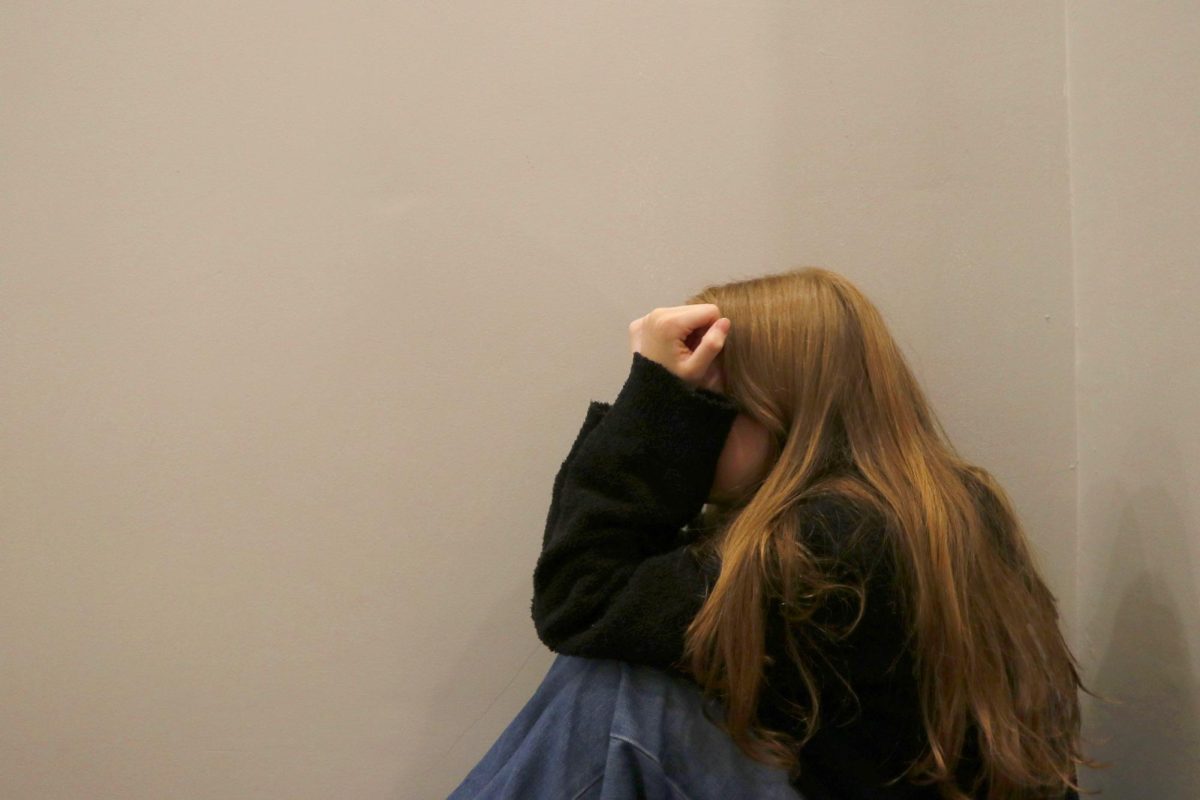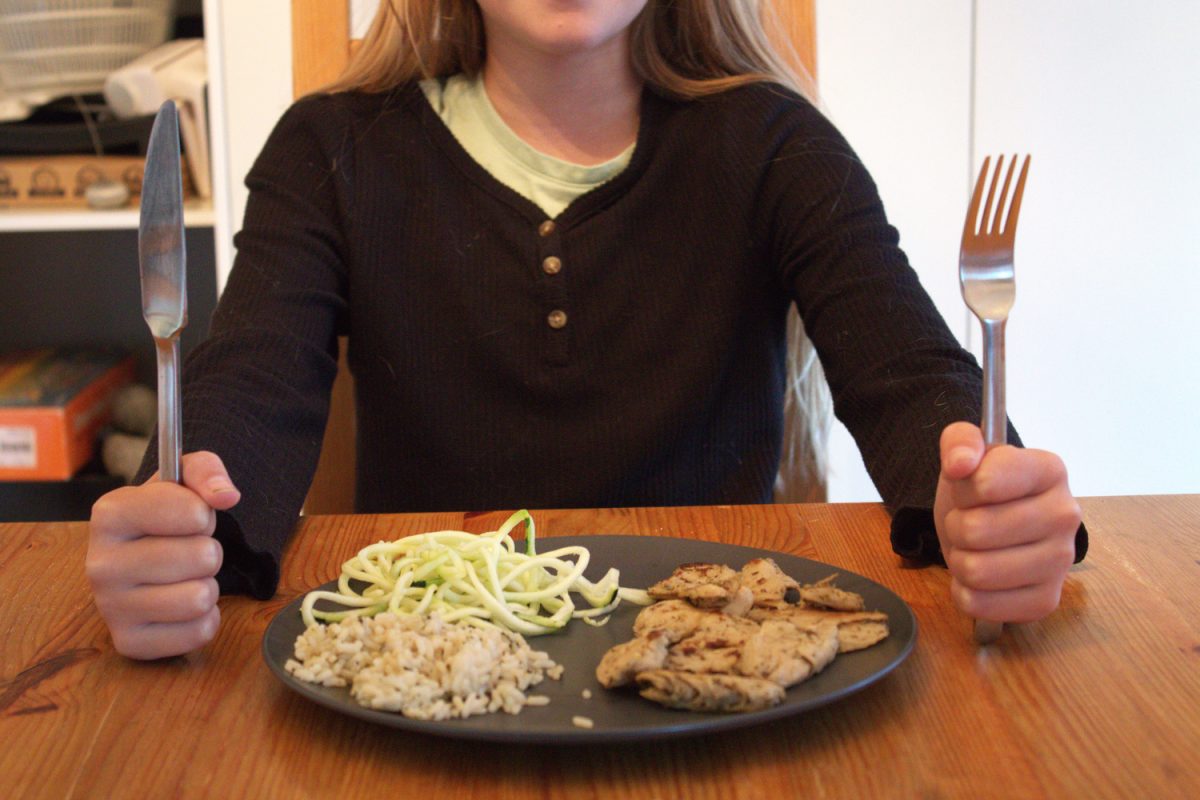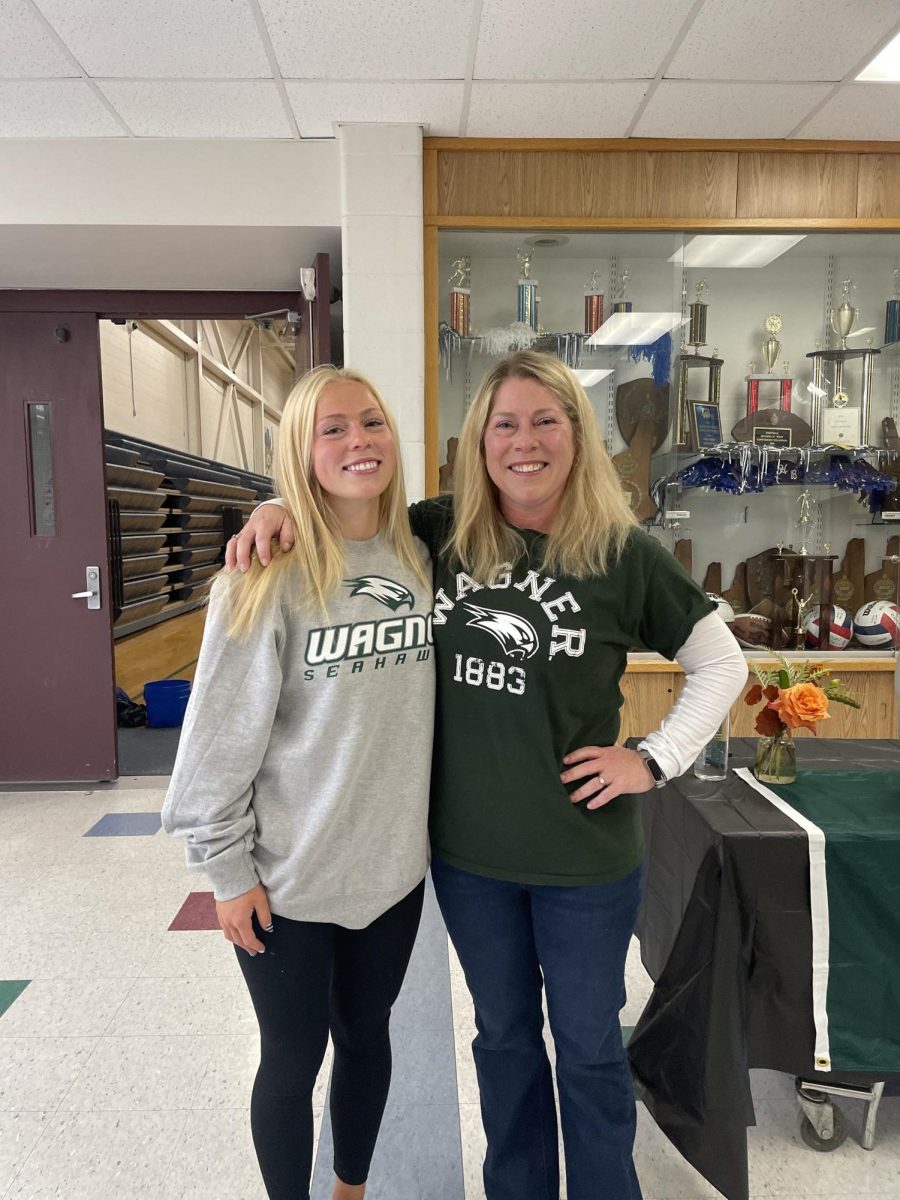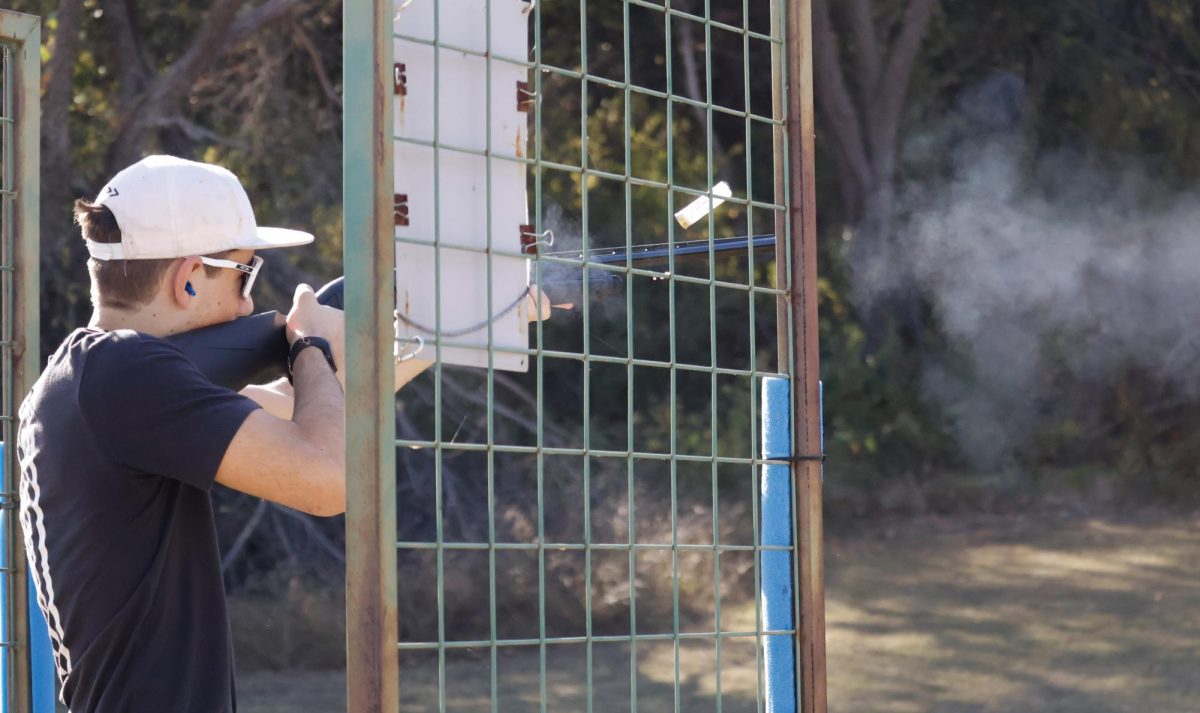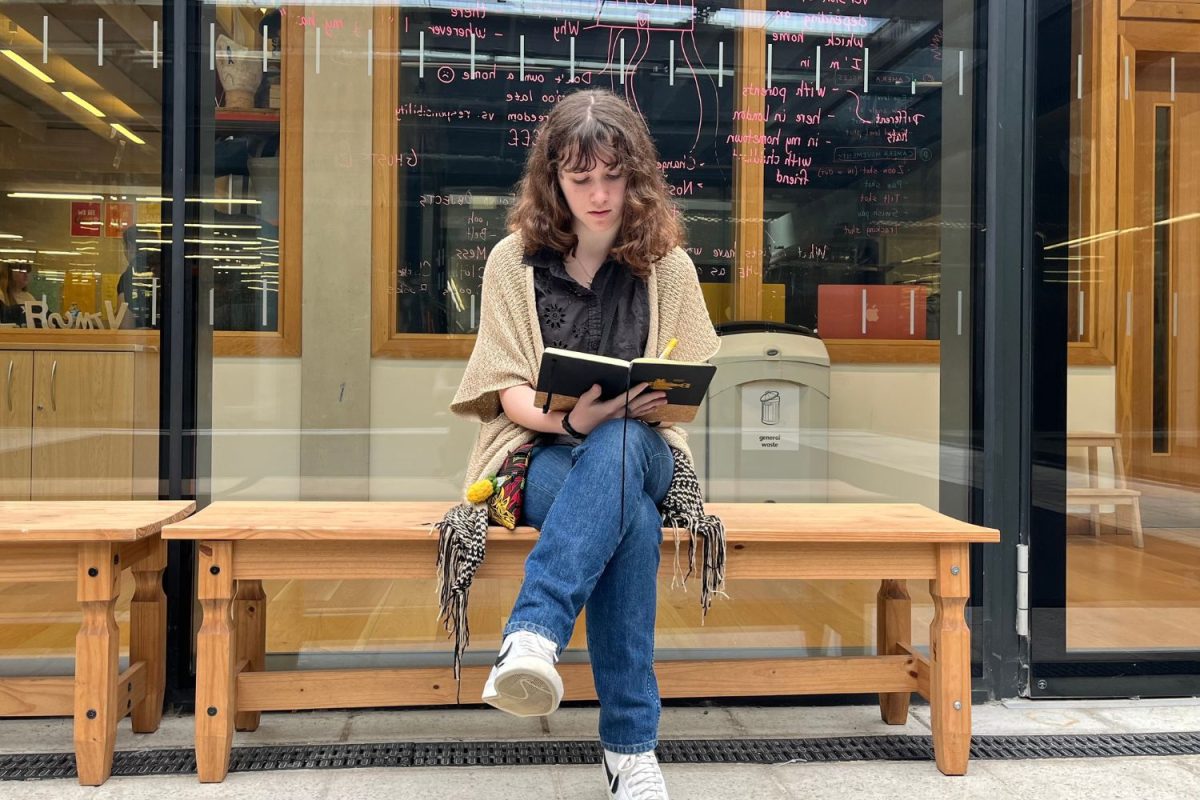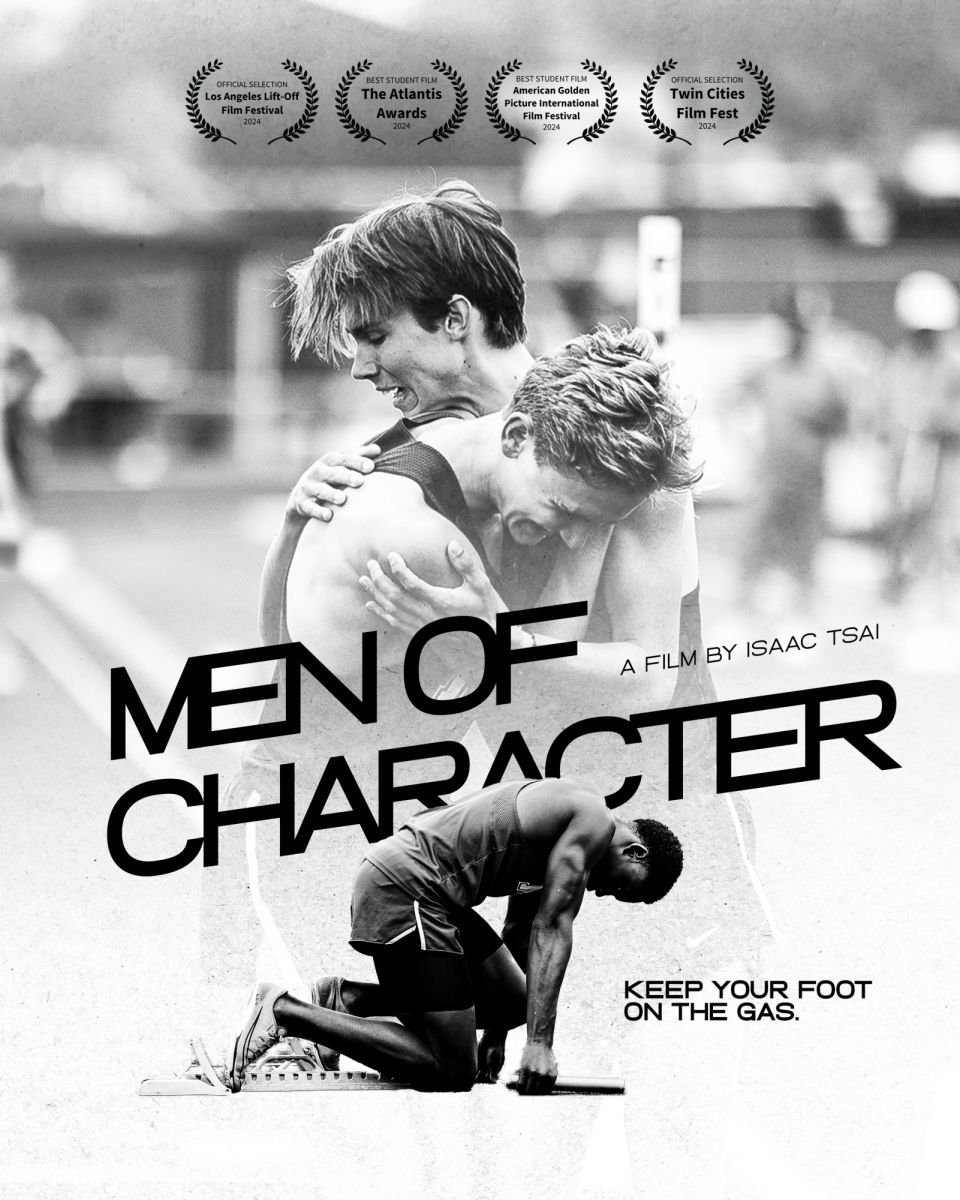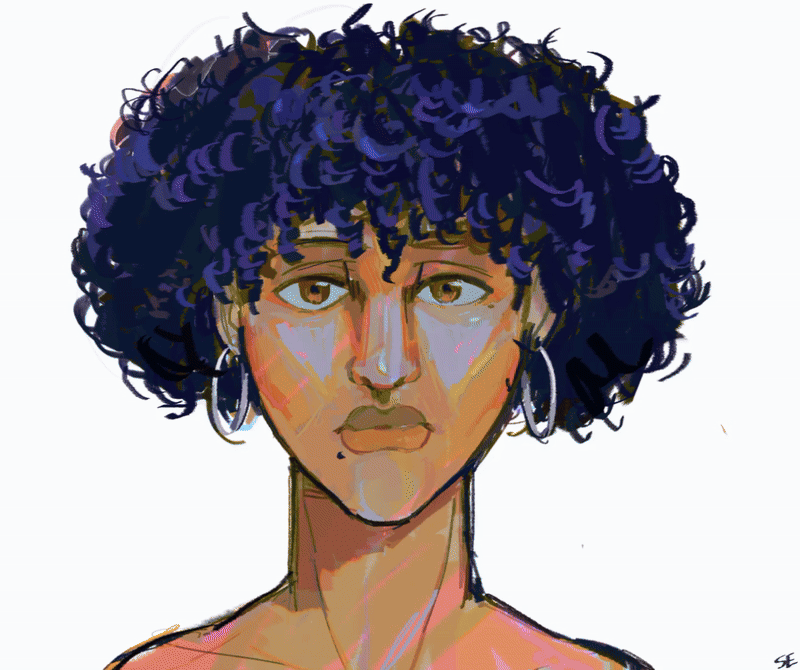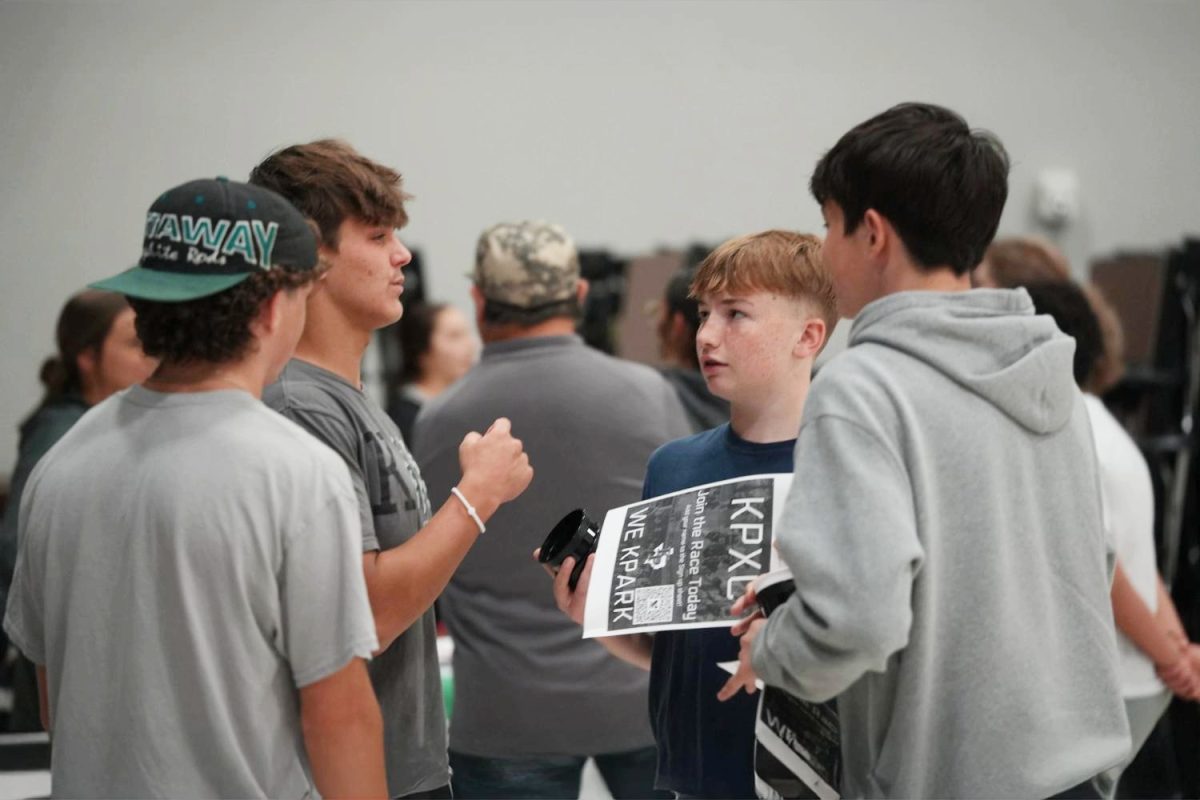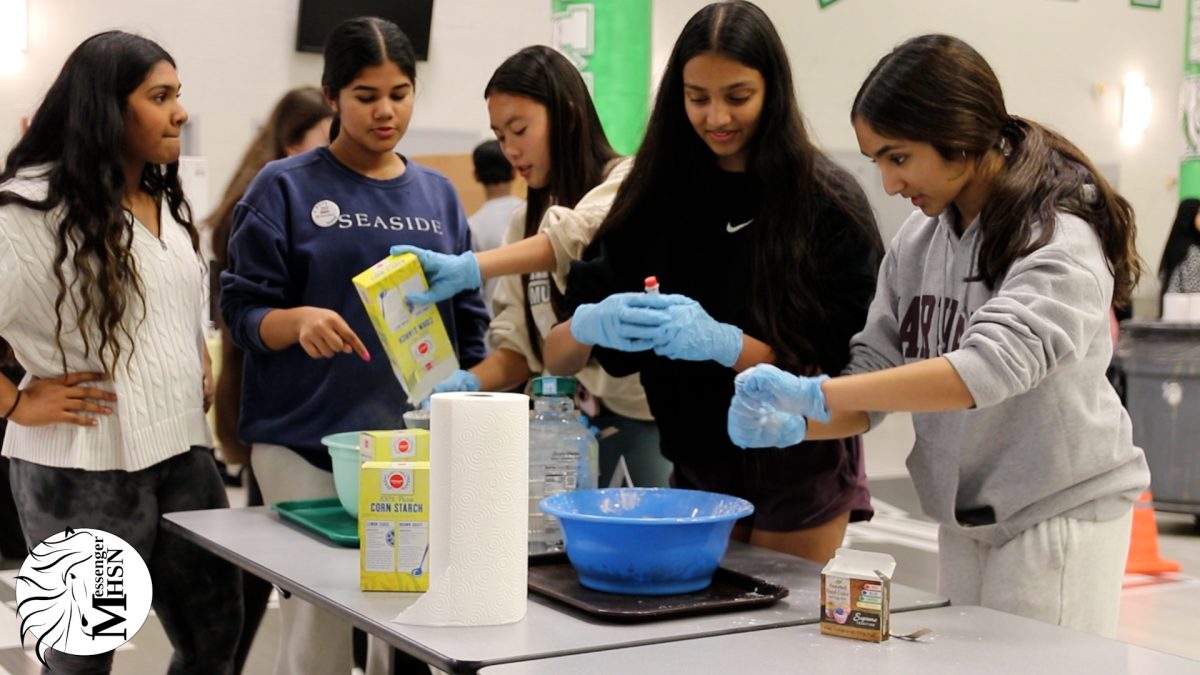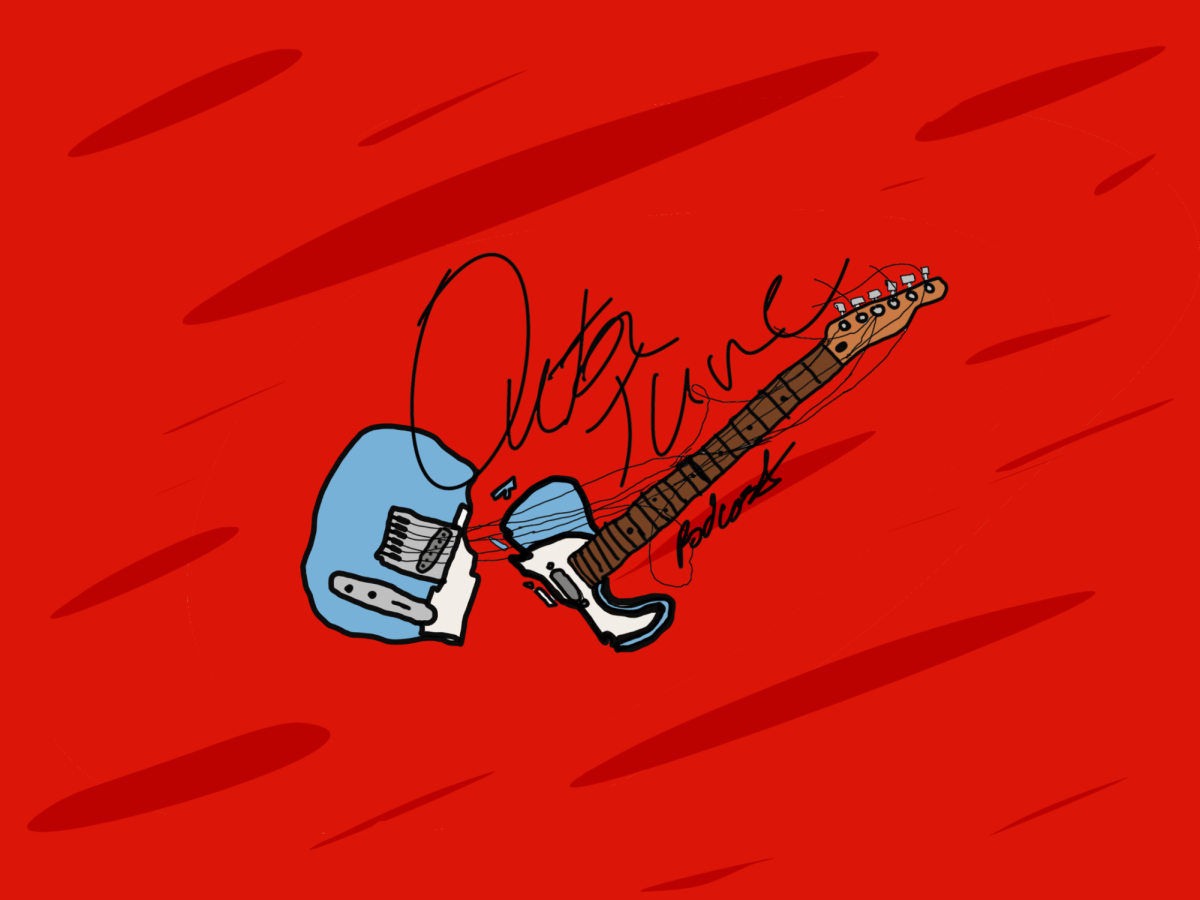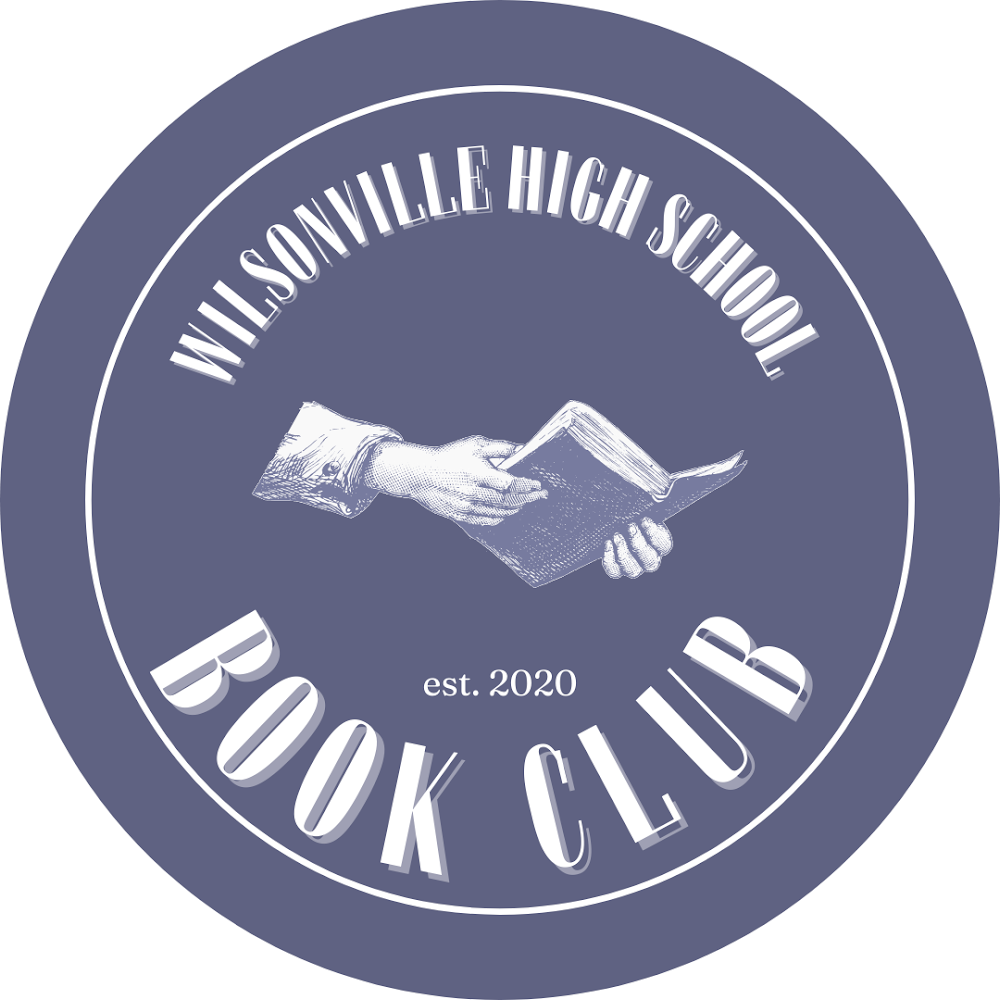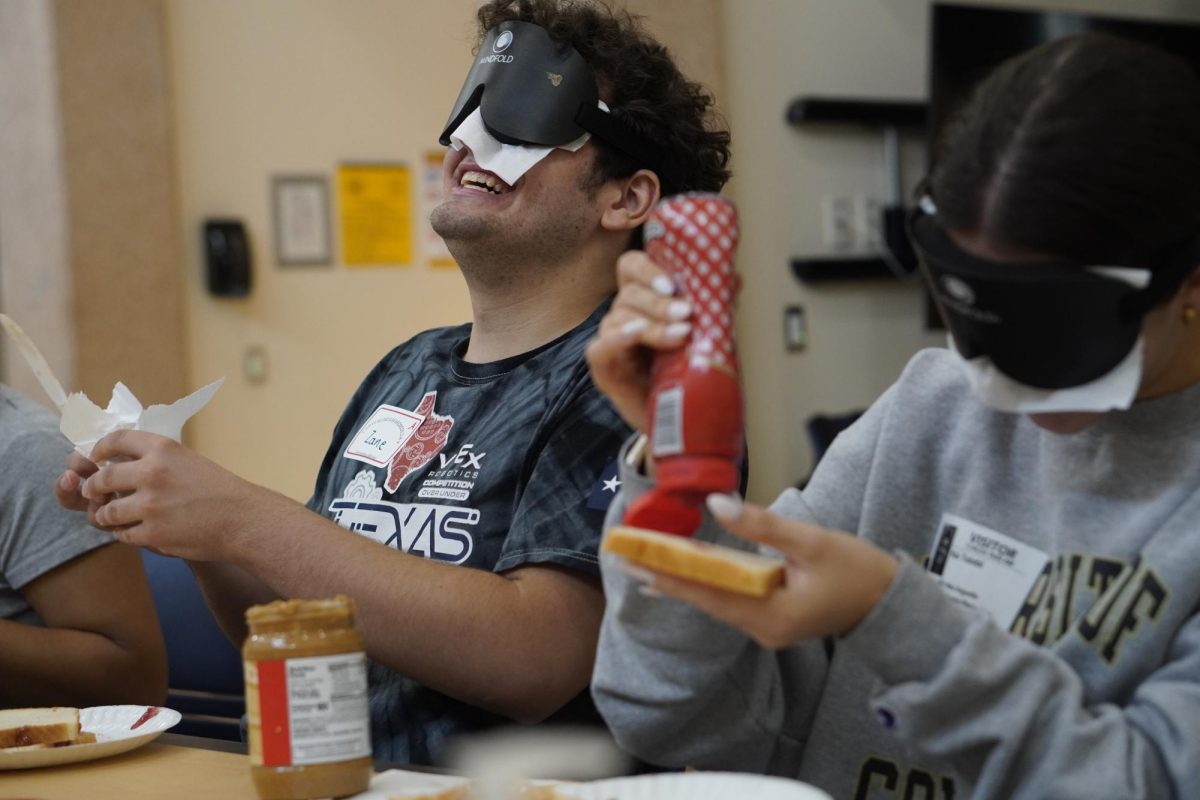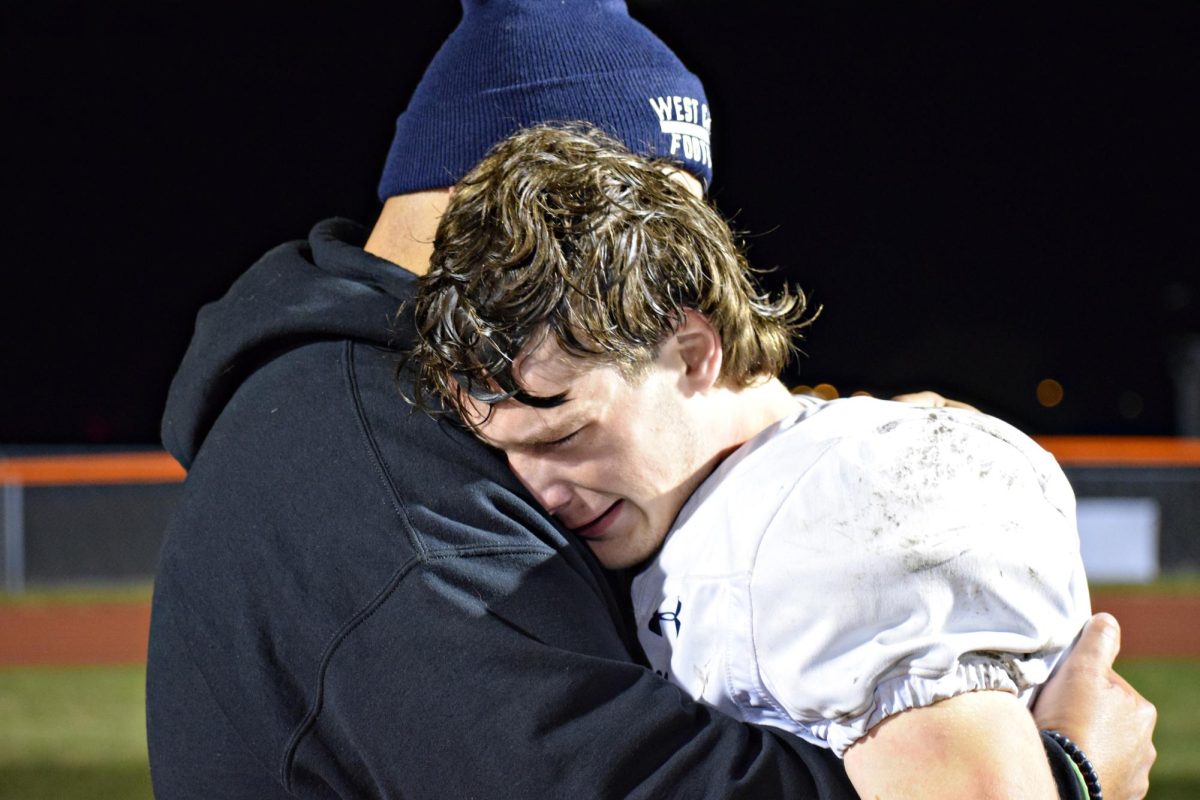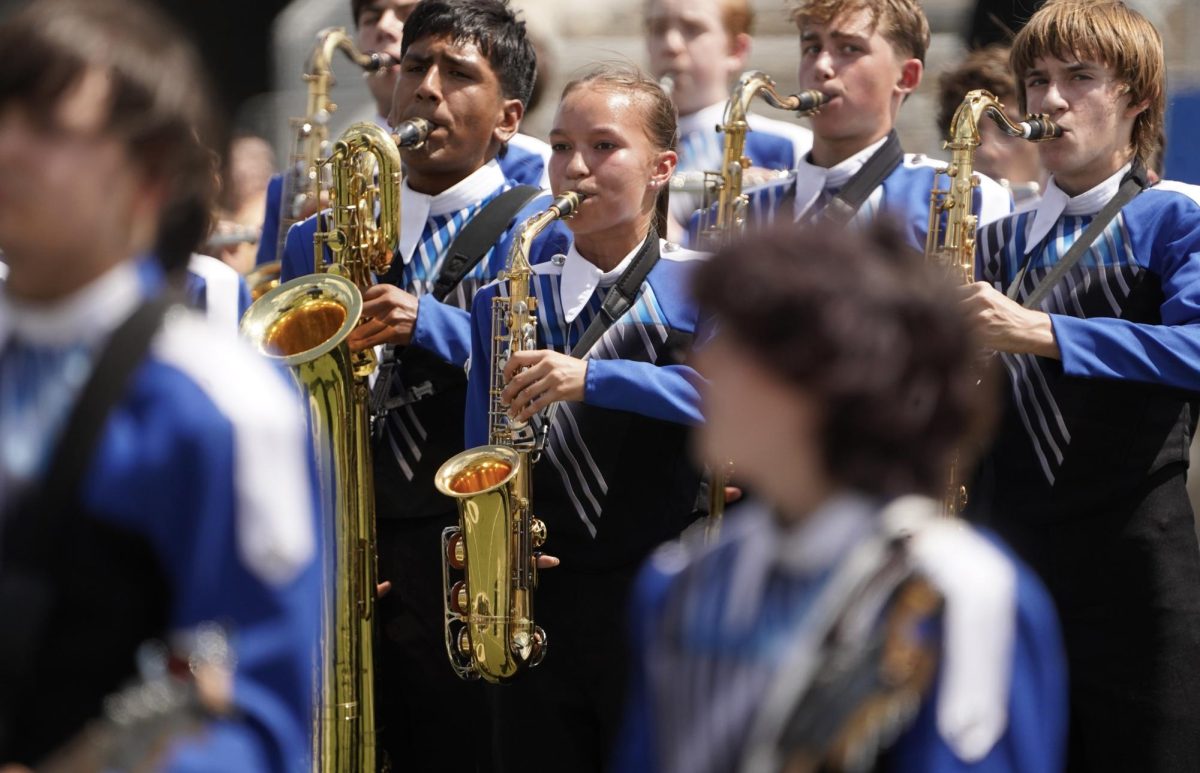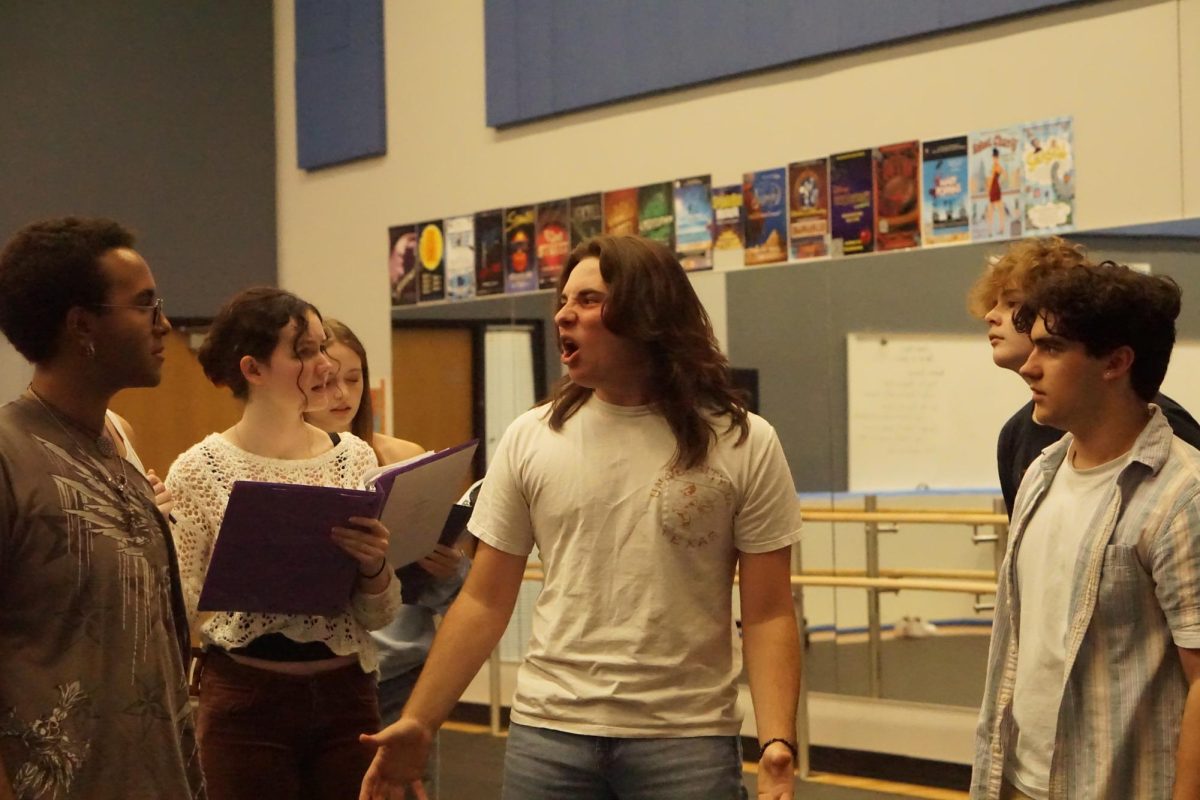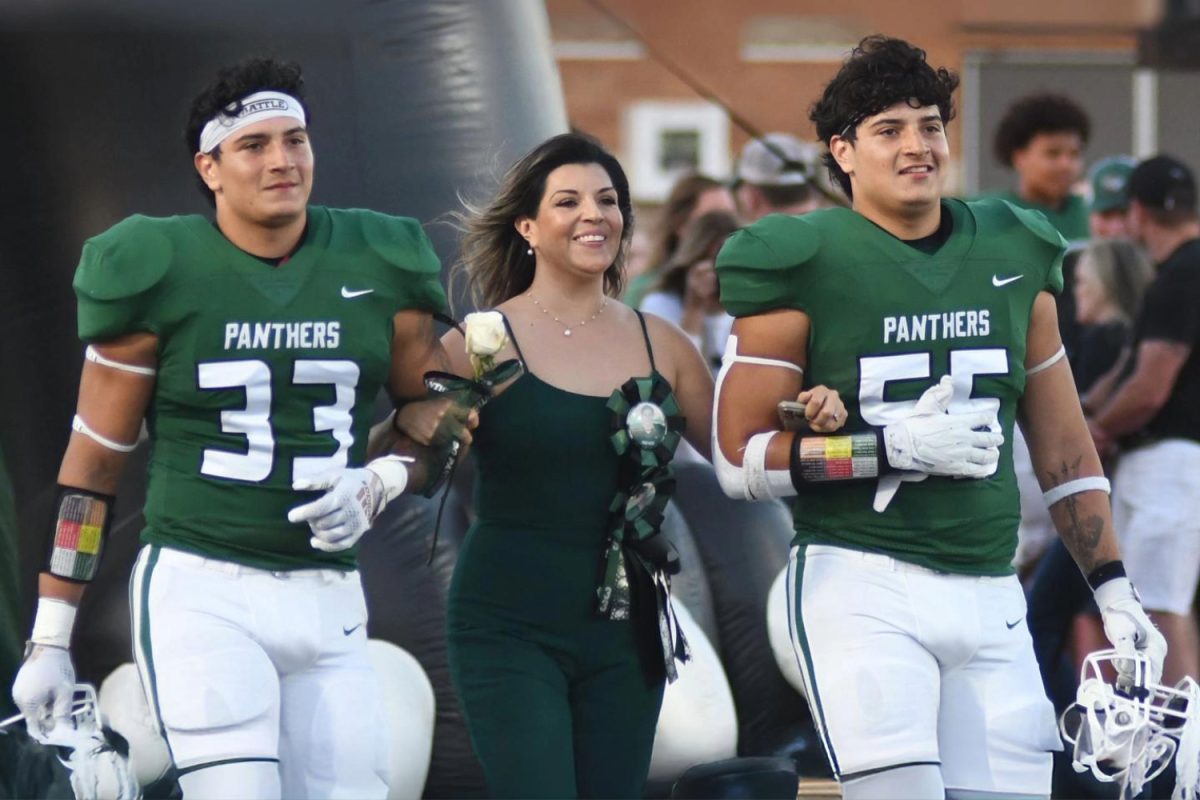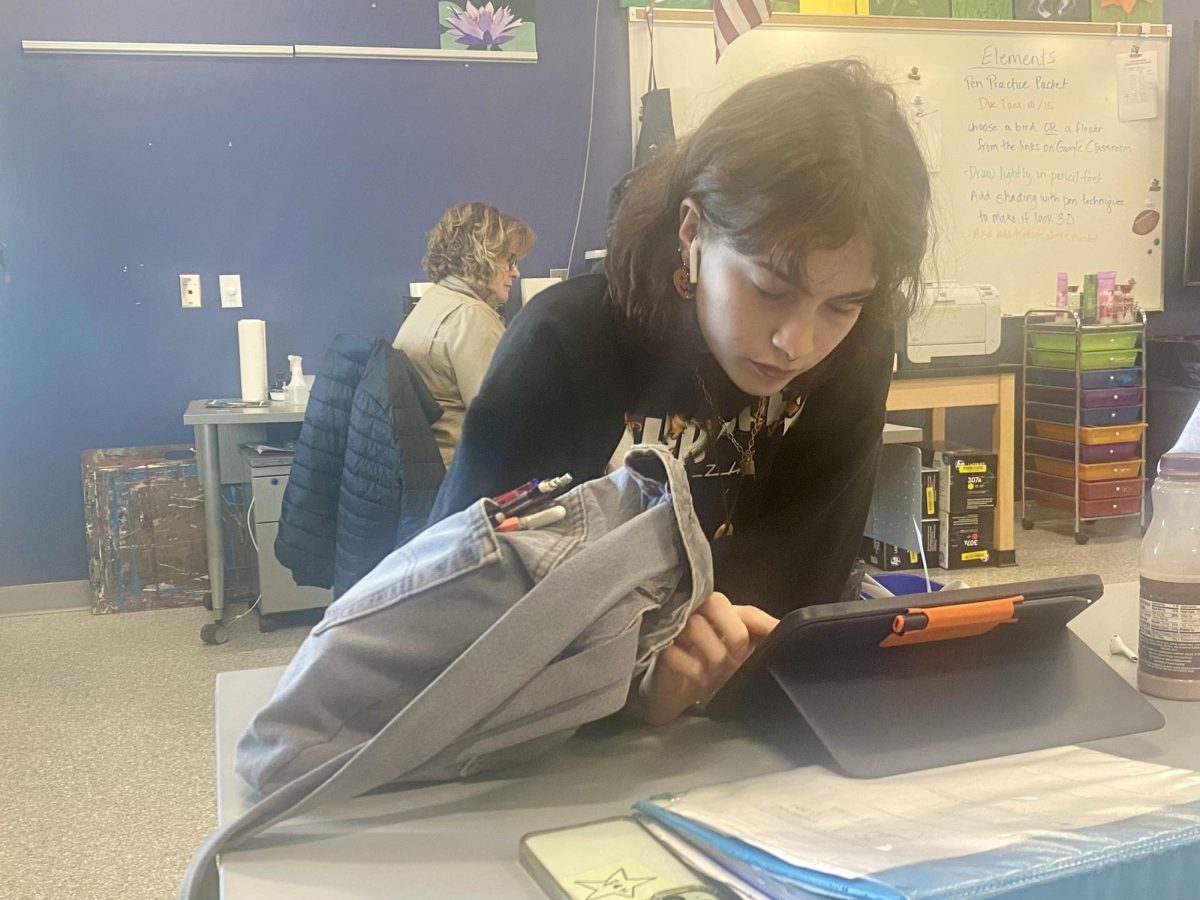By simply observing senior Julia Earley work in art class, anyone can tell that she is experienced in her craft. She moves quickly, falling into a rhythm with her eyes locked on her work. She draws from self-made references, either sketches or pictures that she herself took. Earley often retouches singular strokes until she is fully satisfied with the effect she has made.
Since her freshman year, Earley has involved herself in art classes and art-related extracurriculars. Beyond praise from teachers and administrators alike, her work has garnered recognition from national programs. For her senior year, in addition to taking AP Art for a second time, Earley plans on broadening her horizons by working as stage manager for this year’s upcoming Revere Players productions.
Earley, in her time at Revere, has participated in the Scholastic Art Show both her sophomore and junior year. She won a gold key, the highest award level, as a sophomore, and a gold and silver key as a junior. Additionally, since her freshman year, she has received first place in at least one category at Revere’s annual art show.
“I’d say the [award] that I am most proud of is probably the first gold key I got my sophomore year, because it’s usually only seniors in the competition. But Mr. Pierson decided that I should enter the thing that I made because he thought it would win. . . He thought it was unique. I was just glad that he saw that in me when I was younger,” Earley said.
Earley, now one of Revere’s most decorated art students, did not consider art classes a serious pathway in her high school career at first.
“When I was [a freshman]. . . doing crew, I never considered ever doing AP art. . . Mr. Pierson [suggested I] sign up for Drawing and Design for sophomore year, and then junior year [AP], and then [another] AP senior year, which is exactly what I did. If it weren’t for him, I wouldn’t have actually taken it more seriously. I would have probably just done classes for fun,” Earley said.
Robert Pierson, who teaches AP Art among other high-level art classes that focus on foundational techniques, took note of Earley’s commitment to excellence in her work early on as a student.
“She will rework something until it’s flawless. . . Usually artists that don’t see a limit to what they can learn are pretty successful in the arts. There’s a certain humility that goes into becoming a better artist,” Pierson said.
Jennifer Seegert, another high school art teacher who has had Julia in Watercolor and Digital Art, shares Pierson’s sentiment regarding Julia’s work ethic.
“She is absolutely dedicated to making every single project the best that it can possibly be. And that’s more [valuable] than any other factor, even natural skill sets. . . Caring about every little thing is the mark of who will be a superior artist in the end,” Seegert said.
Seegert places great emphasis on determination and commitment to work in a classroom setting, traits that she feels Earley exemplifies strongly.
“I have never known her to have to be told to get started on something. . . Sometimes students are a little bit intimidated by the materials, and she never seemed to be that way. She came in every day, got to work right away, handed everything in on time, asked the right questions [and] worked as much as she could in her own time as well,” Seegert said.
Pierson explains how self-motivation and self-sufficiency are key to success in higher-level art, especially AP, which features the submission of a 15-work portfolio with writing by the end of the course.
“The AP classes are independent. I’m teaching people how to teach themselves, just like if you were teaching. . . someone how to play piano. You can show them how it works, a general approach, but no one will get good at piano without practicing over and over again. . . It’s not a gift. . . Talent is earned,” Pierson said.
Now in her second year of AP Art, Earley emphasizes the rigor of the class and what she learned from her first year.
“It’s about being able to maintain your commitment to the piece even when you have to keep coming back to it after 40 minutes every day. . . You really have to grind. I also feel like I didn’t know about the writing part of it very much junior year, but now I feel like, as I’m doing these pieces, I’m thinking about what I’m going to write about. . . [which] makes me more prepared,” Earley said.
The writing portion of the AP portfolio includes a list of materials used for each piece, as well as a summary of the focus of the portfolio (technique or subject) as a whole. According to Earley, AP graders look for some sort of growth in the time in which the portfolio was completed. Despite the difficulty of some of the courses, Earley looks forward to her art classes as a way of decompressing and being able to catch up with friends.
“It’s a de-stressing moment. . . I get to, kind of, ease into my day. And I also really like the people that are in the classes, that makes them even more fun,” Earley said.
Seegert understands the importance of allowing students the freedom to unwind in the classroom and using their work as a means of flexing creative thought in ways that many academic classes do not allow for.
“[Art classes] use a part of your brain that you don’t really get to access when you’re in an academic setting, like a traditional core class, because [teachers] don’t do a lot of talking. . . I really feel like this is [students’] chance. . . to socialize,” Seegert said.
Seegert believes that success in art, similar to the success Earley found, has real-world applications beyond knowledge of technique and materials.
“The attention to detail, the ability to concentrate in chaos [and] the self-motivation is huge. . . In every single aspect of your life, you’re constantly making judgments. You’re constantly figuring out, “where did I go wrong in the steps?”. . . It’s just another set of skills that I think rounds out,” Seegert said.
Beyond her involvement in AP Art and other art classes, Earley also serves as an officer in National Art Honors Society, which already participated in the Fall Extravaganza by hosting a face painting booth. Pierson, the adviser of the club, explains what some of her responsibilities entail.
“She’s presently co-president of the society now. . . she’s reminding people of our meetings and sign ups for our opportunities. Julia was one of the early sophomores that took advantage of [eligibility requirements] to be in the National Art Honors Society, which is fitting,” Pierson said.
The National Art Honors Society is busy with face painting for several events throughout the year, including the upcoming Boo at the School festivities. Later in the year, the organization is responsible for facilitating the art show, which includes sorting and tagging all pieces on display. Most members also assist with set construction for Revere Players’ shows in the fall and spring.
Rounding out her high school art career, Earley has now taken on the role of stage manager for Revere Players’ fall production of Treasure Island. After working crew her freshman and sophomore year, she joined the cast the fall of her junior year in The Crucible before returning backstage for the musical. She explains what drew her back to the crew, specifically taking on the challenge of stage manager this year.
“I’ve looked up to my stage managers in my past years doing it. . . The whole vibe backstage was determined by the stage managers. . . [and] I want to be able to make it a good experience for everybody else. I’ve already experienced being on stage. I just wanted to go back to my friends, my roots,” Earley said.
Each production generally has two stage managers, one for each side of the stage. According to Earley, the stage manager’s responsibility is mainly to facilitate scene changes by assigning props to specific crew members to ensure everything runs smoothly. Stage managers also have the responsibility of acting as a general authority figure and role model backstage to keep things under control during the show. With a production as prop-involved as Treasure Island, Earley anticipates some challenges.
“It’ll be new with the opening doors, because that’s the thing that I’ve never done before. I know Pierson used to do it at the old school, but this is, like, the first time we’ve done that in a while. . . There’s some logistics we need to figure out,” Earley said.
Seegert, who has Julia as a student this year, is proud to see her continuing growth and involvement in the arts.
“I haven’t had her since she was a freshman, so there’s a big gap there. I’m happy to see she’s still that same self motivated, driven student that I got to know when she was in ninth grade,” Seegert said.
One thing is for certain: if Earley brings the same drive, discipline and natural talent to her position as stage manager as she does to all of her artwork, audiences can expect a smoothly-run stage production come November.
This story was originally published on Lantern on October 24, 2024.



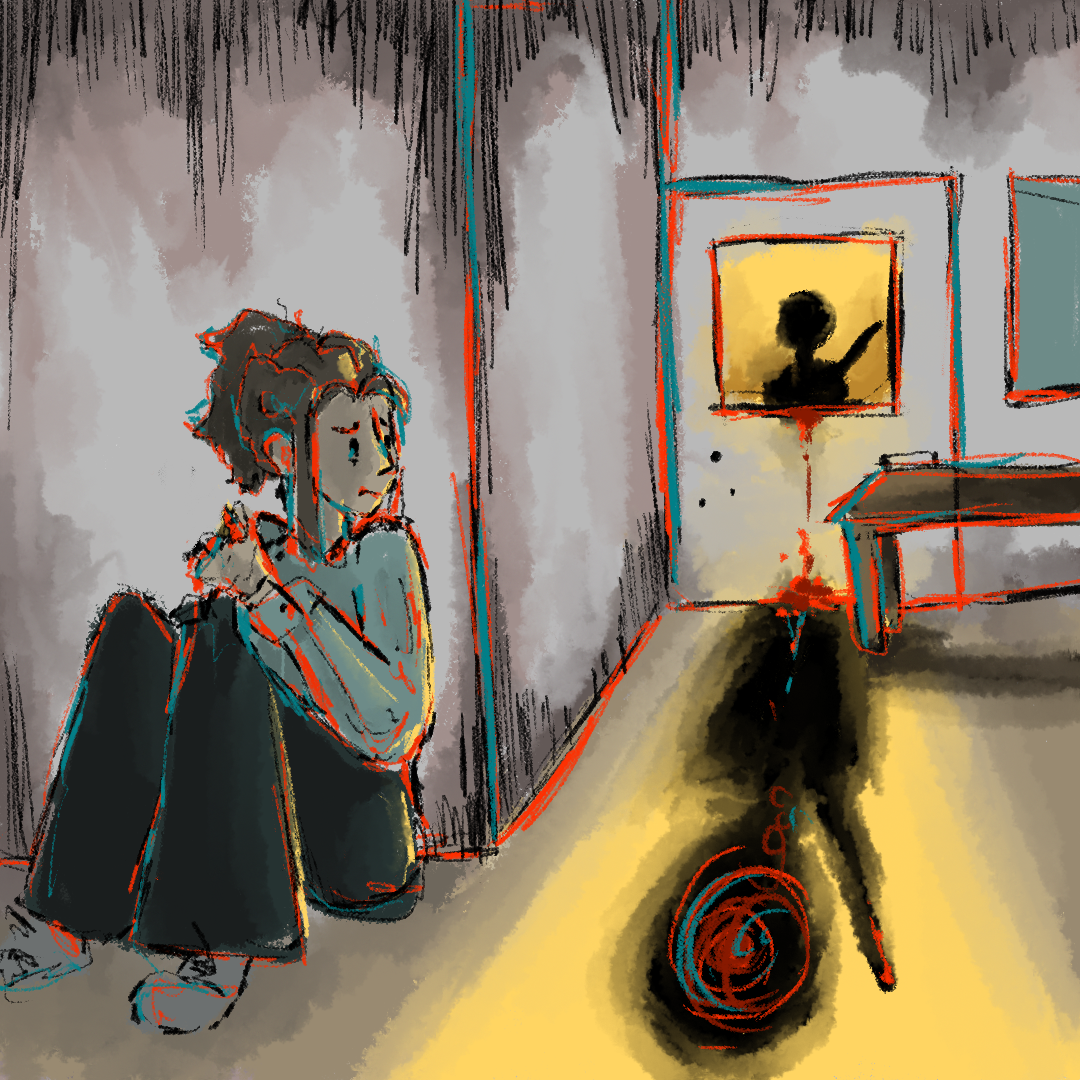
![Holding up T-wolves, the tour group poses for a picture in the Chinese classroom. Sophomore Lydia Ou, junior Phu Trung and senior Yushan Pan gave a tour to Taiwanese diplomat Andrea Yang on Nov. 8. “I was so excited when I heard I would get to give the tour because it’s a big deal,” Ou said. “She’s from the US embassy for Taiwan, so she’s really important. I’m so privileged [to get this opportunity] and I’m so excited.” Photo by Skyler King](https://bestofsno.com/wp-content/uploads/2024/11/Main-Taiwan.jpg)

